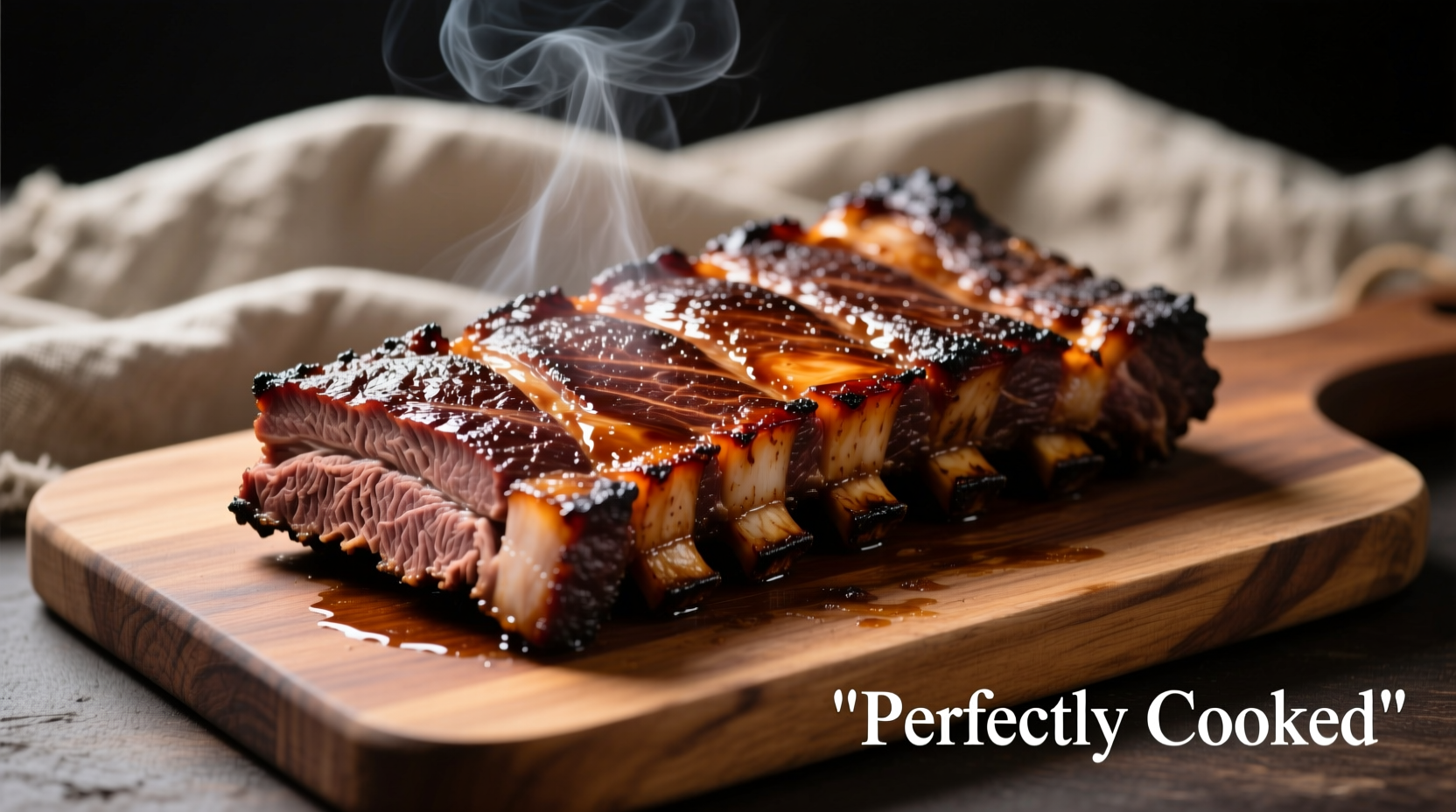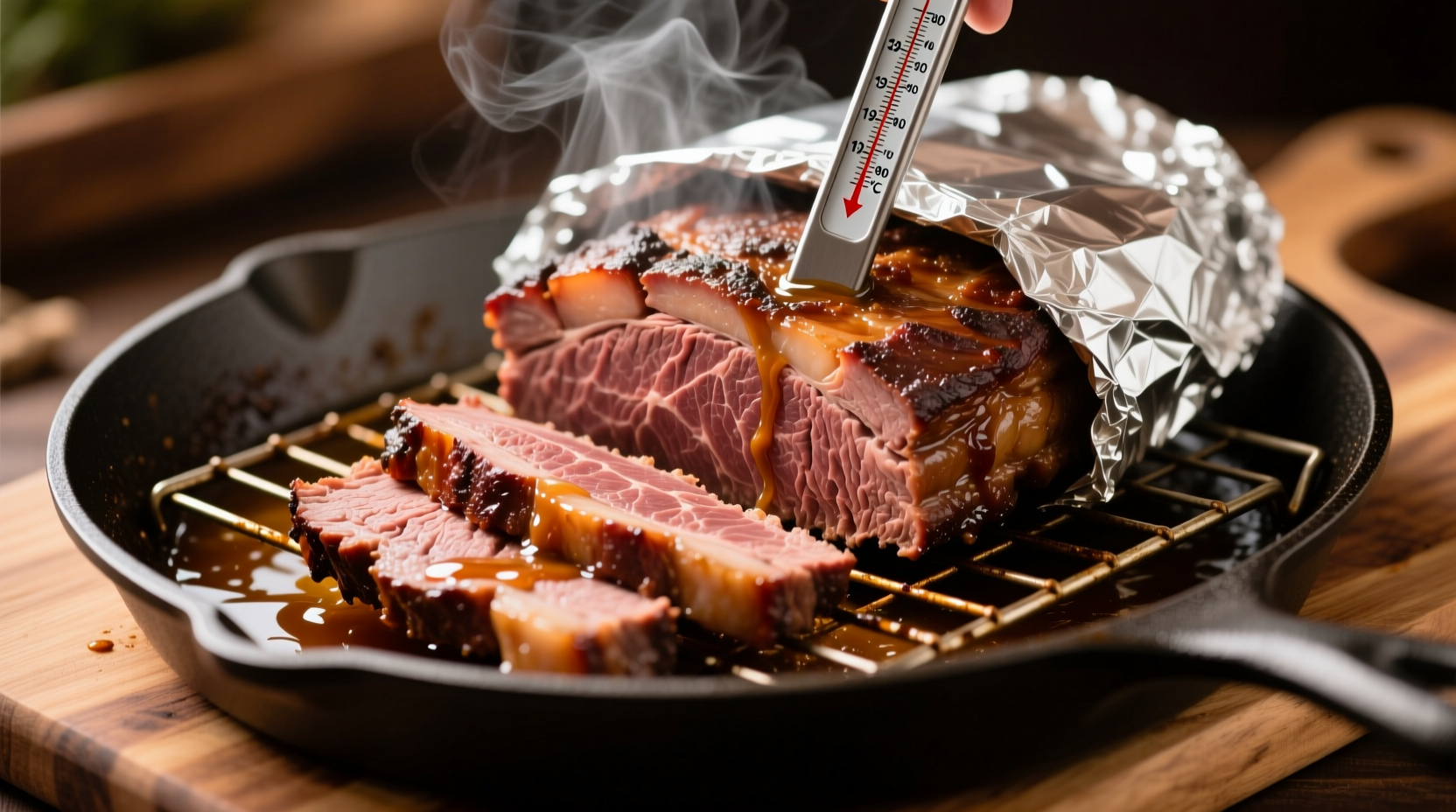For a standard 12-14 lb beef brisket, cook at 275°F for approximately 1 hour per pound (12-14 hours total) until internal temperature reaches 195-205°F. Smaller cuts (8-10 lbs) require 10-12 hours at 225°F, while larger briskets (14-16 lbs) need 10-12 hours at 300°F. Always verify doneness with a meat thermometer and probe test—time alone isn't reliable due to variables like oven accuracy and meat thickness.
The Complete Guide to Perfect Oven-Cooked Brisket Timing
Nothing compares to the rich, melt-in-your-mouth texture of properly cooked brisket. Yet getting that perfect result requires understanding why timing varies and how to recognize true doneness. As a chef who's cooked hundreds of briskets across professional kitchens and home ovens, I'll show you exactly how long to cook brisket of beef in oven for flawless results every time—without guesswork.
Why Brisket Timing Isn't One-Size-Fits-All
Brisket's dense muscle structure and abundant connective tissue demand precise temperature management. Unlike steaks that cook quickly, brisket requires "low and slow" cooking to transform tough collagen into gelatin. This biochemical process (called collagen hydrolysis) begins around 160°F and completes between 195-205°F, according to research from Texas A&M Meat Science. Rushing this process leaves you with chewy, dry meat—no matter how carefully you followed cooking time guidelines.
Your Brisket Cooking Roadmap
Follow this sequence for optimal results, adjusting timing based on your specific cut:
Phase 1: Preparation (30 Minutes)
- Trim excess fat to 1/4-inch thickness
- Apply generous seasoning (salt, pepper, garlic powder)
- Let sit at room temperature for 30 minutes
Phase 2: Oven Setup (10 Minutes)
- Preheat oven to your target temperature (225°F-300°F)
- Place brisket fat-side up on a rack in a roasting pan
- Add 1 cup beef broth to pan bottom
Phase 3: The Critical Cooking Window
This is where most home cooks go wrong. Instead of fixating on clock time, monitor these indicators:
| Brisket Weight | Recommended Temp | Approximate Time | True Doneness Indicator |
|---|---|---|---|
| 8-10 lbs | 225°F | 10-12 hours | Internal temp 195°F + probe slides in like butter |
| 10-12 lbs | 250°F | 10-12 hours | Meat "jiggles" when touched + temp 200°F |
| 12-14 lbs | 275°F | 12-14 hours | Probe meets no resistance + temp 203°F |
| 14-16 lbs | 300°F | 10-12 hours | Collagen fully broken down + temp 205°F |
Note: These times assume consistent oven temperature. Use an oven thermometer for accuracy—most built-in thermostats vary by 25°F+.
Phase 4: The Essential Rest Period (Minimum 1 Hour)
Skipping this step causes moisture loss. Wrap brisket in butcher paper or aluminum foil, then place in an empty cooler or warm oven (150°F) for 1-4 hours. This allows juices to redistribute and final tenderization to occur.

When Standard Timing Guidelines Fail
Several factors require timing adjustments beyond simple weight calculations:
- "The Stall" (150°F-170°F plateau): Evaporative cooling can pause temperature rise for hours. Maintain patience—don't increase oven temp.
- Thermometer accuracy: Calibrate your probe thermometer in ice water (32°F) and boiling water (212°F at sea level).
- Oven type: Convection ovens cook 25% faster—reduce temperature by 25°F.
- Starting temperature: Chilled meat adds 1-2 hours to cooking time.
Proven Doneness Tests That Beat the Clock
Time estimates provide a framework, but these physical tests confirm perfection:
- Thermometer Check: Insert probe into thickest part. Target 195-205°F for tender results.
- Probe Test: A skewer should slide in with zero resistance, like warm butter.
- Jiggle Test: Lift one end—the brisket should wobble like jelly.
- Texture Check: Press with tongs—it should give easily without resistance.
Avoid These 3 Timing Mistakes
Even experienced cooks fall prey to these common errors:
Mistake #1: Relying Solely on Cooking Time
Brisket thickness varies dramatically between point and flat cuts. A 12-pound brisket with a thick point may need 2 hours longer than a uniformly thin cut. Always prioritize temperature and texture over the clock.
Mistake #2: Cutting Too Soon After Cooking
Resting isn't optional. Cutting immediately after cooking releases precious juices. For competition-style results, rest for 4 hours—the connective tissue continues breaking down during this phase.
Mistake #3: Ignoring Oven Hot Spots
Rotate the pan every 2 hours for even cooking. Most ovens have temperature variations of 15-25°F between front and back.
When Oven Cooking Isn't Ideal
This method works best for standard home ovens with consistent temperature control. Consider alternatives when:
- You need results in under 8 hours (try sous vide)
- Cooking for more than 20 people (smoker handles larger quantities)
- Living in extreme climates where oven use affects home temperature
Advanced Timing Adjustments
For perfect results in challenging conditions:
- High altitude cooking: Increase cooking time by 25% above 5,000 feet (water boils at lower temperature)
- Humid environments: Extend cooking time 10-15% (moisture slows heat transfer)
- Older ovens: Add 15-20 minutes per hour (temperature fluctuations are more pronounced)
Final Pro Tips for Timing Success
- Place brisket in oven before leaving for work—it's forgiving if it rests longer
- Use a dual-probe thermometer to monitor both meat and oven temperature
- For parties, cook 24 hours ahead—reheat at 225°F for 1 hour (flavor improves)
- Track your process: Note weight, temp, and actual cooking time for future reference
Frequently Asked Questions
How long to cook a 10 lb brisket at 250 degrees?
A 10 lb brisket requires 10-12 hours at 250°F. Check for doneness at 10 hours using the probe test—the thermometer should read 195-205°F and the probe should slide in with no resistance. Remember that cooking time varies based on brisket thickness and oven accuracy.
Can I cook brisket faster at 350 degrees?
While possible, cooking brisket at 350°F risks drying out the meat before collagen fully breaks down. Higher temperatures cause moisture loss and uneven cooking. For best results, stay within 225-300°F range. If pressed for time, 300°F is the maximum recommended temperature, requiring approximately 40 minutes per pound.
Why did my brisket finish early despite following timing charts?
Several factors can accelerate cooking: convection oven settings (25% faster), thinner cuts, starting with room-temperature meat, or oven running hotter than displayed. Always verify doneness with thermometer and probe test rather than relying solely on time. If finished early, extend the rest period up to 4 hours—this improves texture without overcooking.
How long should brisket rest before slicing?
Brisket requires minimum 1 hour rest, but 2-4 hours yields superior results. During resting, internal temperature remains above 140°F (safe zone) while collagen continues breaking down. Wrap tightly in foil or butcher paper and place in a cooler for extended rests. Never skip resting—it transforms tough meat into tender perfection.
Does cooking time differ for Wagyu brisket?
Yes, Wagyu brisket typically cooks 15-20% faster due to higher marbling. Reduce estimated time by 1-2 hours and check for doneness earlier. The ideal internal temperature remains 195-205°F, but the probe test becomes critical as Wagyu can become mushy if overcooked. Monitor closely during the final 2 hours of cooking.











 浙公网安备
33010002000092号
浙公网安备
33010002000092号 浙B2-20120091-4
浙B2-20120091-4